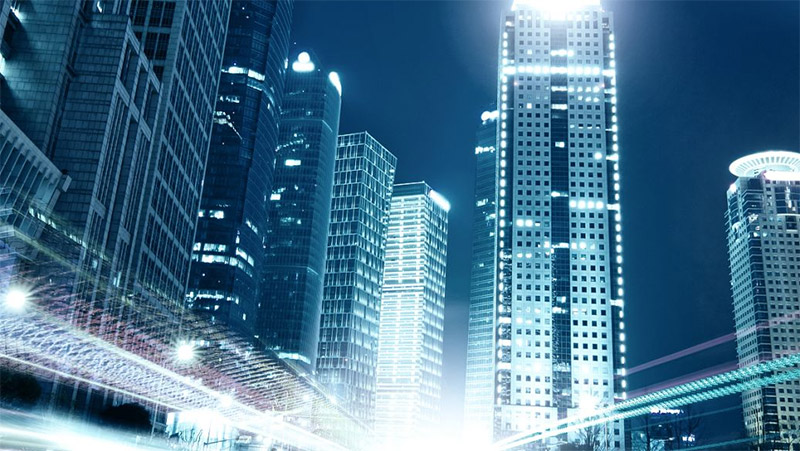Smart buildings promote the realization of the goal of green buildings and minimize the environmental hazards of buildings. Intelligent building technology with advanced digital services and analysis functions makes the building management system more sustainable and cost-effective. The most advanced sensors for automatic control of lighting, air quality and climate, as well as intelligent instruments and energy management systems, enable smart buildings to realize intelligent control of energy consumption, so as to save a lot of energy, improve flexibility and comfort, and benefit people and climate. Smart buildings can also be integrated with energy networks at different levels (such as province or country / region) through smart grid, play a vital role in power management, conduct effective power distribution between each building and the whole city, and form a sustainable energy-saving city.

The emergence of Internet of things (IOT) and related technologies has structured intelligent engineering buildings and released the potential of building sustainable buildings. The continuous use of the Internet of things, including smart phones, smart gadgets and various sensors, can make our building experience more comfortable and humanized, but it will bring increased power consumption and other environmental hazards (such as electronic radiation and increased carbon footprint). Therefore, smart buildings need to be further greenized to produce green smart buildings (GSB).
The green design of smart buildings is now becoming a challenge to maintain the sustainability of nature and save non renewable energy. The 3R (reduce, reuse and recycle) principle is also applicable to the design, construction and operation of smart buildings to make them green and environmentally friendly, so as to help maintain a pollution-free world. Smart engineering buildings should not only minimize the adverse impact of buildings on the environment by taking energy-saving measures and intelligent design, but also provide citizens with a good indoor climate that can adapt to users' activities and needs.
2、 Healthier
At present, COVID-19 is continuing. When people stick to their jobs, buildings are required to bring them health security more intelligently. Sensors and smart controls can help manage people coming and going in the office, while controllable HVAC systems can provide cleaner air. A range of existing smart technologies and emerging methods can be used to support safer and healthier work and living spaces.
Sensor data can play a key role in the safe reopening of building space. Many intelligent controllers can support various sensor functions in HVAC system and the whole office space.
An important indicator of novel coronavirus pneumonia is occupant density. A new method will use mobile phone signal as a means of crew tracking. Even without crowd signals, existing CO2 detectors and other environmental controls can be used to promote the development of safe building infrastructure. CO2 sensors can be used to indicate how many people are in the space. The higher the CO2 concentration, the greater the risk. It can be bound to a smartphone or placed at the door, and then people can see the CO2 concentration in the space.
In addition to CO2, sensors can also be used to send other relevant danger signals. The sensor can detect volatile organic compounds, which may be caused by excessive cleaning. If the building is cleaned two or three times now, more chemicals will be used in the building and need to be discharged in time. "
In addition, there is video analysis, which is an emerging method of building a security infrastructure. Through the correct analysis, the security camera can detect the potential congestion and send a real-time alarm to the building administrator and even the field personnel. Tell the crew what space they are using. When the crew sees the information, they can quickly change their behavior.
Efficient management requires digitization, machine learning and advanced analysis, all of which need to make maximum use of data. Ideally, all these processes should be input into a modern control system, which enables building managers to access important indicators related to system operation and human behavior at any time.
In the future, smart engineering buildings will continue to provide people with healthier working and living space through technological improvement.
3. More efficient
The rise of real estate technology is the most important trend in the global real estate field in the past decade. Real estate technology is the application of information technology and platform economics in the real estate market. Real estate technology enables owners to more efficiently combine all kinds of assets and more efficient application space.
Generally, real estate technology overlaps with internet information technology, real estate finance and financial technology. The goal of real estate technology is to make information processing faster and more effective by borrowing digital technology, so as to help real estate professionals and companies research, purchase, sell and manage real estate.
 97506075
97506075

Wechat QR code
